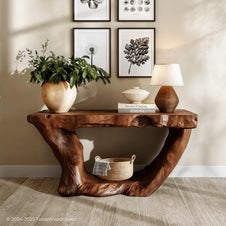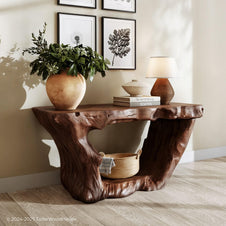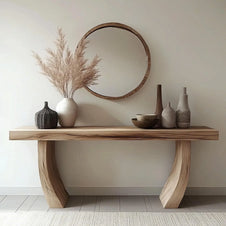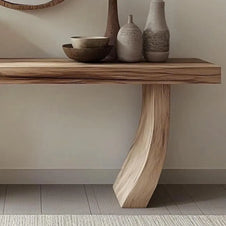Ever wondered how high to hang art on wall without it looking awkward or out of place? Whether it’s a painting, photo, or handcrafted wall art, the right height makes a huge difference. Placing your piece correctly can turn your wall into a focal point and transform your space.
In this guide, we’ll walk you through easy, practical steps to get it right - no guesswork needed. If you want your walls to look stunning, keep reading and try these tips today.
Why Height Matters When Hanging Wall Art
Before you grab a hammer, there’s one detail that can make or break your design – height. Understanding how high to hang art on wall is key to creating a balanced, comfortable, and visually appealing space. Get this right, and your wall art will look like it belongs there, enhancing your entire room.
-
Creates a natural visual flow – Knowing how high to hang art on wall helps your eyes move comfortably around the room, making the wall art blend beautifully with your furniture and décor.
-
Keeps your space balanced – Hanging art too high or too low can throw off the proportions of a room, making it feel awkward or empty.
-
Enhances viewing experience – Placing artwork at the right height ensures you can enjoy every detail without straining your neck.
-
Makes small rooms feel larger – Proper hanging art height can open up visual space, especially in compact living areas.
-
Shows attention to detail – Correct placement demonstrates design awareness, instantly making your home feel more polished and inviting.
General Rule for How High to Hang Art on Wall
When it comes to how high to hang art on wall, interior designers often follow one simple guideline: place the center of the artwork about 57–60 inches from the floor. This is roughly eye level for most people, making your wall art easy to enjoy without tilting your head up or down.
If you’re hanging art above furniture like a sofa, console, or bed, position the bottom of the frame about 6–8 inches above the top of the furniture. This creates a connected, cohesive look while still giving your artwork breathing room.
Always step back after positioning your wall art to make sure it feels balanced in the space. What looks right up close might feel too high or too low from across the room.
|
Art Height (inches)
|
Hanging Point from Floor (inches)
|
|
20
|
57–60
|
|
30
|
57–60
|
|
40
|
57–60
|
Hanging Art in Small Spaces
Small rooms can feel tricky to decorate, but the right strategies for hanging art can actually make them feel more spacious and welcoming. Here’s how to get it right:
-
Pick the perfect size: In compact areas, go for smaller wall art or a vertical arrangement to draw the eye upward and visually expand the room.
-
Remember eye-level placement: Even in tight spaces, follow the rule of how high to hang art on wall - keeping the center of the piece around 57–60 inches from the floor helps maintain balance and avoids visual clutter.
-
Use gallery-style clusters: Create a cohesive layout with a group of small frames or artwork arranged in a grid or staggered pattern. This draws attention and adds personality without overwhelming the wall.
-
Opt for multifunctional art: In tiny spaces, combine function with style. For instance, hang a small shelf and place framed wall art above it to add depth and serve your storage needs.
-
Mirror magic: Incorporate mirrors as part of your artwork - mirrored panels or mirror-accented pieces brighten the room and give an illusion of more space.
-
Add dynamic décor pieces: A sculptural wall piece like this driftwood fish wall decor is both visually striking and light enough to avoid overwhelming your wall. Hang it with care, and it becomes a perfect focal point that adds charm without compromising space.

Special Cases: Wooden Panels and Thin Wood Art
Some wall art pieces - like wood panels or thin wood-based designs - come with unique considerations. Understanding how high to hang art on wall remains essential, but there are extra factors to consider when the piece is lighter, three-dimensional, or delicately crafted.
-
Know your materials and weight: Wooden panels are often lighter than framed prints but sometimes have uneven weight distribution.
-
Maintain proper height: The same wall art rules apply - keep the center around 57–60 inches from the floor to maintain that gallery-level feel.
-
Prevent damage when hanging art: Thin wood can crack or warp if hung improperly. Pre-drill small pilot holes before inserting screws to safeguard the material.
-
Choose the right visual anchor: If your piece is sculptural or designed with texture - like this coastal driftwood panel - placing it slightly off-center can help balance other décor elements and draw attention to its natural detail
Explore this example: Coastal Driftwood Wall Art. It’s lightweight yet impactful - a perfect example of art that blends airy design with tactile appeal.

Hanging Wall Art Above Furniture
When placing wall art above furniture, the key is to balance proportion and height. The general rule for how high to hang art on wall still applies - position the bottom of the frame 6–8 inches above the top of the furniture.
-
Mind the scale: Choose artwork that’s around two-thirds the width of the furniture. This ensures the arrangement feels intentional and proportional.
-
Create visual harmony: For example, when hanging art above a sofa, ensure the artwork’s center sits at eye level, but adjust slightly if your sofa has a high backrest.
-
Add character with unique pieces: Sculptural or textural art can enhance the look without overpowering the room. A great choice is this Driftwood Whale Wall Art, which brings coastal charm and organic warmth while fitting perfectly above a console, bed, or sofa.

Hanging Art Without Nails (Small Spaces or Rentals)
If you’re in a rental or have delicate walls, there are ways to hang art without nails while still following the essential rules of how high to hang art on wall for a balanced, professional look. Even without drilling, you can keep your hanging art at the perfect height for harmony in the room.
-
Adhesive hooks – strong yet removable, perfect for hanging art without damaging paint or plaster.
-
Velcro strips – easy for lightweight pieces, letting you adjust the position while maintaining how high to hang art on wall guidelines.
-
Tension rods – perfect for hanging multiple works in one area without making permanent changes.
This works especially well for temporary displays or seasonal wall art, giving you flexibility without sacrificing style.
Grouping Multiple Pieces of Art
When you’re arranging several pieces together, the key is balance and cohesion. Always keep in mind the rule of how high to hang art on wall so your grouping feels intentional rather than chaotic.
Start by laying your pieces on the floor to experiment with layouts before committing to nails. Keep about 2–3 inches between frames for breathing room. Whether your style is symmetrical grids or an organic arrangement, maintain consistent visual weight across the grouping.
For a unique touch, incorporate textured or sculptural pieces like this driftwood wall decor, which adds depth and natural warmth. Even with such statement pieces, remember to stick to how high to hang art on wall rules to keep everything cohesive. By thoughtfully hanging art in clusters, you create visual impact without overwhelming the room.

How to Hammer a Nail in Tight Spaces
Small spaces can make hammering tricky, but with the right hanging art techniques, you can still get beautiful results without damaging your walls. Use these tips:
-
Hold the nail with pliers to protect your fingers
-
Use a short-handled hammer for better control
-
Consider pre-drilling a small pilot hole to prevent splitting wood
If you can’t use a hammer, explore no-drill solutions that work perfectly for how high to hang art on wall arrangements - like adhesive or magnetic hangers - especially for lightweight wall art. These options keep your space stylish and damage-free.
Tips for Perfect Placement Every Time
To avoid mistakes:
-
Use painter’s tape to mark the placement before committing
-
Step back and check from different angles
-
Adjust based on lighting and furniture placement
For more expert advice, check Park West Gallery’s rules for hanging art or The Spruce’s art placement tips.
FAQs
1. What is the standard height to hang art on a wall?
Most experts recommend placing the center of your artwork about 57–60 inches from the floor, which is considered average eye level. This ensures your wall art looks balanced in most spaces.
2. Should I hang art at the same height in every room?
Not necessarily. While the 57–60 inch guideline works well for living rooms and hallways, you might want to adjust in spaces like dining rooms or offices where you view art from a seated position.
3. How high should I hang art above furniture?
A good rule is to keep the bottom of the frame 6–8 inches above the top of the furniture, such as a sofa or console table. This creates a connected visual flow between the furniture and the art.
Final Thoughts
Learning how high to hang art on wall is about balancing eye level, furniture placement, and the room’s overall feel. Whether it’s a single statement piece or a gallery wall, correct placement ensures your wall art enhances - not overwhelms - your space.
By applying these tips and experimenting with different heights, you can transform your walls into stunning displays. Start today - pick your favorite art piece, measure carefully, and hang it where it will shine.




















